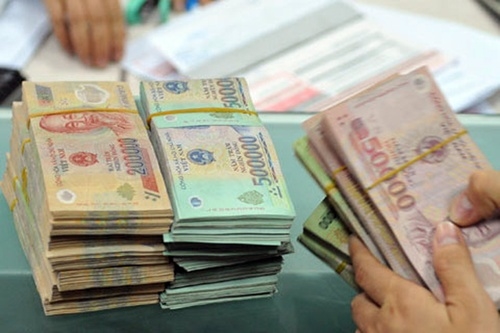 Business Beat
Business Beat
.jpg)
Over a month after the State Bank of Việt Nam called on banks to cut interest rates on loans, particularly to businesses, some banks - including joint stock lenders - have reduced their rates by 0.5-1 per cent.
 |
| Over a month after the State Bank of Việt Nam called on banks to cut interest rates on loans, particularly to businesses, some banks - including joint stock lenders - have reduced their rates by 0.5-1 per cent. — Photo vtv.vn |
Over a month after the State Bank of Việt Nam called on banks to cut interest rates on loans, particularly to businesses, some banks - including joint stock lenders - have reduced their rates by 0.5-1 per cent.
They include BIDV, Vietcombank, Vietinbank, Agribank, TPBank, Techcombank and SHB. But the number to do so accounts for a modest proportion of the total number of banks.
What prevents other banks from cutting lending interest rates?
Loan interest rates at most banks range from 7 to 11 per cent (average 8.5 per cent), while their average cost of capital is 7.8 per cent.
This means that their interest rate spread is often insignificant.
So what can banks do to lower lending interest rates without affecting their spread?
The spokespersons of some banks have said they are trying to cut costs but also are trying to make do with lower profits. However, they cannot cut deposit interest rates since it has other risky implications.
Many analysts say reducing the lending interest rates is not just the responsibility of the banks but also of the Government.
After all, it had relentlessly issued bonds at high interest rates and the market relies greatly on them to determine interest rates.
This year, for instance, by May the State Treasury had mobilised VNĐ147 trillion (US$6.533 million) by issuing government bonds via auctions and its main customers were banks.
To stop banks from investing in its bonds the Government needs to cut public spending, which is often financed by bonds issuances that put upward pressure on interest rates.
According to a report from the Central Institute for Economic Management, in the first quarter of this year the budget deficit amounted to VNĐ47.1 trillion ($2.1 billion), equivalent to 5.53 per cent of the gross domestic product, or higher than the 4.61 per cent in 2015, 4.91 per cent in 2014 and the average of 4.86 per cent in 2011-15.
If the deficit is not reined in, the Government’s fiscal leeway will narrow and the pressure to issue bonds will increase.
Another problem that prevents the banks from cutting the interest rates is the high incidence of bad debts and the central bank’s tardy pace of dealing with them.
After years of high bad rates, banks are beset by liquidity problems. The central bank should soon provide the banks with refinancing loans at low interest rates and special bonds from the VAMC against bad debts it buys.
It should also quickly clean up the bad debts so that banks’ liquidity improves and they can cut their interest rates.
Reducing compulsory reserves and bank liquidity reserves is another imperative that would release around VNĐ100 trillion ($4.44 million) worth of funds.
Government bonds remain attractive
Government bonds have been popular this year and in fact are considered the favourite asset class for credit institutions and foreign investors.
The State Treasury said in May bond issuances raised VNĐ43.34 trillion ($1.93 billion), almost half higher than in April, with five-year papers being the bestsellers, accounting for 77 per cent.
Liquidity in the economy and buying by foreign investors have been the prime reasons for the heavy buying.
For banks it was not the peak lending period, meaning many of them were sitting on piles of cash from short-term deposits.
According to the Ministry of Planning and Investment, the banking sector’s credit grew by only 4.52 per cent as of May 20.
The Treasury, on its part, saw this as an opportunity to mop up cash.
The banking sector has been awash in liquidity: the central bank has mopped up nearly VNĐ20 trillion via open market operations while the interbank interest rates have dropped sharply across the board.
The interest rates for overnight to one-week loans on the interbank market last week plunged to the lowest level in more than one year after the central bank issued Circular 06/2016/TT-NHNN to reduce banks’ adequacy ratios.
The overnight rate fell by 32 basis points to 1.46 per cent a year and the one-week rate dropped 51 points to 1.55 per cent.
The central bank has also been buying a lot of foreign exchange to increase its reserves to an estimated $7 billion now.
Foreign investors have been very active on the bond market, the primary market since Việt Nam does not have a secondary bond market.
In the last week of May alone, for instance, their buying topped VNĐ2.2 trillion, taking their total net buying this year to VNĐ10.7 trillion.
The treasury plans to issue bonds worth VNĐ70-80 trillion in the second quarter, most of them for short terms.
It expects to easily achieve this target since in its recent Circular 06 the central bank increased the maximum rate of short-term deposits that can be invested in government bonds from 15 per cent to 35 per cent for foreign banks and to 25 percent for State-owned banks.
This means dozens of trillions of đồng worth of bonds are likely to be sold. - VNS
.jpg)



